Posted on October 4th, 2017 by Mary Lord
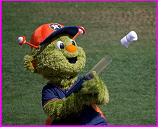 Students follow the engineering design process to design and build a usable device to propel school T-shirts up into the stands during home sporting events while keeping costs under budget.
Students follow the engineering design process to design and build a usable device to propel school T-shirts up into the stands during home sporting events while keeping costs under budget.
Read More
Filed under: Class Activities, Grades 6-8, Grades 6-8, Grades 9-12, Grades 9-12, Grades 9-12, Lesson Plans | Comments Off on Flying T-Shirt Challenge
Tags: catapult, cheerleaders, Class Activities, Engineering Design Process, forces, Grades 6-8, Grades 9-12, Lesson Plan, maker challenges, motion, Physics, Sports, T-shirt cannon, teachengineering, tools
Posted on September 27th, 2017 by Mary Lord
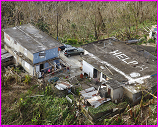 Hurricanes, earthquakes, and other destructive events offer timely “teachable moments” about the role of engineers in improving weather forecasts and reducing the toll from natural disasters. eGFI Teachers’s collection of activities, feature articles, and other resources can help you integrate engineering into your classes – and inspire the next generation of “crisis” engineers.
Hurricanes, earthquakes, and other destructive events offer timely “teachable moments” about the role of engineers in improving weather forecasts and reducing the toll from natural disasters. eGFI Teachers’s collection of activities, feature articles, and other resources can help you integrate engineering into your classes – and inspire the next generation of “crisis” engineers.
Read More
Filed under: Class Activities, Grades 6-8, Grades 6-8, Grades 9-12, Grades 9-12, Grades K-5, Grades K-5, Lesson Plans, Special Features | Comments Off on Disaster Engineering
Tags: Army Corps of Engineers, build, building, Class Activities, data, Disaster relief, drought, Engineering, Environmental Engineering, erosion, forces, hurricane, Hurricane Maria, measure, Mining, motion, National Guard, natural disasters, Physics, rescue, storm, Structural Engineering, Teacher Resources, Technology, tornado, Weather, Web Resources
Posted on September 22nd, 2017 by Mary Lord
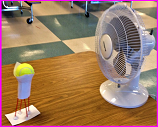 In this engineering design challenge about building in hurricane-prone regions, students learn that a solid base helps stabilize a structure by constructing, testing, and redesigning a tower that can support a tennis ball at least 18 inches off the ground while withstanding the wind from a fan.
In this engineering design challenge about building in hurricane-prone regions, students learn that a solid base helps stabilize a structure by constructing, testing, and redesigning a tower that can support a tennis ball at least 18 inches off the ground while withstanding the wind from a fan.
Note: While suitable for all ages, this activity works best with upper elementary students and older.
Read More
Filed under: Class Activities, Grades 6-8, Grades 9-12, Grades K-5 | Comments Off on Building for Hurricanes
Tags: build, Civil Engineering, Class Activities, Engineering Design, Grades 6-8, Grades 9-12, Grades K-5, hurricane, skyscraper
Posted on July 11th, 2017 by Mary Lord
 Stitched circuits and musical instruments made from marshmallows are among the latest offerings in the 2017 Maker Camp, a virtual DIY summer camp sponsored by Make magazine. Many activities could work well as classroom projects, too!
Stitched circuits and musical instruments made from marshmallows are among the latest offerings in the 2017 Maker Camp, a virtual DIY summer camp sponsored by Make magazine. Many activities could work well as classroom projects, too!
Read More
Filed under: Class Activities, Grades 6-8, Grades 9-12, Grades K-5, K-12 Outreach Programs, Web Resources | Comments Off on Virtual Maker Camp
Tags: Class Activities, DIY, Grades 6-8, Grades 9-12, Grades K-5, Internet Resources, Make magazine, Maker camp, STEAM, Summer Camps & Programs (Students), virtual field trips, Web Resources
Posted on May 30th, 2017 by Mary Lord
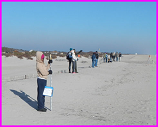 High school students working in groups of three to four learn about the primary causes and impacts of coastal erosion, and use elevation data to construct profiles of a beach over time or to compare several beaches, make inferences about the erosion process, and discuss how humans should respond.
High school students working in groups of three to four learn about the primary causes and impacts of coastal erosion, and use elevation data to construct profiles of a beach over time or to compare several beaches, make inferences about the erosion process, and discuss how humans should respond.
Read More
Filed under: Class Activities, Grades 9-12, Grades 9-12, Grades 9-12, Lesson Plans | Comments Off on Who Moved the Beach?
Tags: beach, Civil Engineering, Class Activities, coastal erosion, coastal management, data analysis, Earth Science, Environmental Engineering, erosion, Grades 9-12, jetties, Lesson Plan, NOAA, USGS
Posted on May 4th, 2017 by Mary Lord
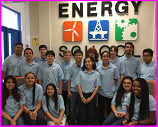 Along with free activity guides for its signature JVInvenTeams innovation contest for students in grades 7 to 10,,the Lemelson-MIT Program is presenting three-day summer workshops this summer designed to help teachers encourage middle and high school students to think and act like inventors while developing solutions to real world problems.
Along with free activity guides for its signature JVInvenTeams innovation contest for students in grades 7 to 10,,the Lemelson-MIT Program is presenting three-day summer workshops this summer designed to help teachers encourage middle and high school students to think and act like inventors while developing solutions to real world problems.
Read More
Filed under: For Teachers, Grades 6-8, Grades 9-12, K-12 Outreach Programs, Special Features, Web Resources | Comments Off on Lemelson-MIT Resources for Teaching Invention
Tags: Grades 6-8, Grades 9-12, Internet Resources, invention, MIT Lemelson, Professional Development, Programs for Teachers, Resources for Teachers, student inventors, Teacher Training, Web Resources
Posted on February 13th, 2017 by Mary Lord
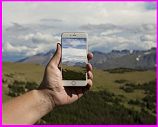 Every day, millions of ordinary people young and old help advance knowledge in fields as diverse as astronomy and zoology. These “citizen” scientists and engineers record bird sightings and rainfall amounts, classify stars, monitor lead in local tap water, count frogs, and even discover comets! Here’s a sampling of projects. Where will you or your students volunteer?
Every day, millions of ordinary people young and old help advance knowledge in fields as diverse as astronomy and zoology. These “citizen” scientists and engineers record bird sightings and rainfall amounts, classify stars, monitor lead in local tap water, count frogs, and even discover comets! Here’s a sampling of projects. Where will you or your students volunteer?
Some projects spur new legislation. Others inspire community involvement and a lifelong interest in STEM.
Here’s a sampling of projects. Where will you or your students dive in?
Read More
Filed under: Class Activities, Grades 6-8, Grades 9-12, Grades K-5, Special Features, Web Resources | Comments Off on Join a Citizen STEM Project!
Posted on February 3rd, 2017 by Mary Lord
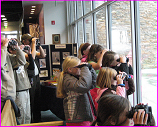 Want to engage your students while helping scientists get the “big picture” on what’s happening to bird populations worldwide? Grab some binoculars and join the annual Great Backyard Bird Count, which takes place February 17-20, 2017.
Want to engage your students while helping scientists get the “big picture” on what’s happening to bird populations worldwide? Grab some binoculars and join the annual Great Backyard Bird Count, which takes place February 17-20, 2017.
One of the oldest and biggest citizen-science projects is the annual Great Backyard Bird Count, held this year from February 17 to 20
Read More
Filed under: Class Activities, Grades 6-8, Grades 9-12, Grades K-5, K-12 Outreach Programs, Special Features, Web Resources | Comments Off on STEM Takes Wing!
Tags: Citizen Science, Class Activities, cornell ornithology lab, Curriculum, Events, Great Backyard Bird Count, national audubon society, STEM education
Posted on December 12th, 2016 by Mary Lord
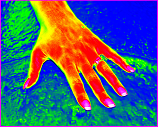 In this lesson, high school students learn the value of writing and art in science and engineering by designing visual diagrams to communicate the results of thermal conductivity (heat flow) experiments they have conducted to anyone with little background on the subject. The principles of visual design include contrast, alignment, repetition, and proximity, and involve such elements as the use of lines, color, texture, shape, size, value, and space.
In this lesson, high school students learn the value of writing and art in science and engineering by designing visual diagrams to communicate the results of thermal conductivity (heat flow) experiments they have conducted to anyone with little background on the subject. The principles of visual design include contrast, alignment, repetition, and proximity, and involve such elements as the use of lines, color, texture, shape, size, value, and space.
Read More
Filed under: Class Activities, Grades 9-12, Grades 9-12, Lesson Plans | Comments Off on Visualize STEM
Tags: Art, Class Activities, diagram, experiment, Grades 9-12, graphic design, heat flow, Presentations, STEAM, Technical Communications, thermal imaging, writing
 Students follow the engineering design process to design and build a usable device to propel school T-shirts up into the stands during home sporting events while keeping costs under budget.
Students follow the engineering design process to design and build a usable device to propel school T-shirts up into the stands during home sporting events while keeping costs under budget. 








 Hurricanes, earthquakes, and other destructive events offer timely “teachable moments” about the role of engineers in improving weather forecasts and reducing the toll from natural disasters. eGFI Teachers’s collection of activities, feature articles, and other resources can help you integrate engineering into your classes – and inspire the next generation of “crisis” engineers.
Hurricanes, earthquakes, and other destructive events offer timely “teachable moments” about the role of engineers in improving weather forecasts and reducing the toll from natural disasters. eGFI Teachers’s collection of activities, feature articles, and other resources can help you integrate engineering into your classes – and inspire the next generation of “crisis” engineers. In this engineering design challenge about building in hurricane-prone regions, students learn that a solid base helps stabilize a structure by constructing, testing, and redesigning a tower that can support a tennis ball at least 18 inches off the ground while withstanding the wind from a fan.
In this engineering design challenge about building in hurricane-prone regions, students learn that a solid base helps stabilize a structure by constructing, testing, and redesigning a tower that can support a tennis ball at least 18 inches off the ground while withstanding the wind from a fan. Stitched circuits and musical instruments made from marshmallows are among the latest offerings in the 2017 Maker Camp, a virtual DIY summer camp sponsored by Make magazine. Many activities could work well as classroom projects, too!
Stitched circuits and musical instruments made from marshmallows are among the latest offerings in the 2017 Maker Camp, a virtual DIY summer camp sponsored by Make magazine. Many activities could work well as classroom projects, too! High school students working in groups of three to four learn about the primary causes and impacts of coastal erosion, and use elevation data to construct profiles of a beach over time or to compare several beaches, make inferences about the erosion process, and discuss how humans should respond.
High school students working in groups of three to four learn about the primary causes and impacts of coastal erosion, and use elevation data to construct profiles of a beach over time or to compare several beaches, make inferences about the erosion process, and discuss how humans should respond. Along with free activity guides for its signature JVInvenTeams innovation contest for students in grades 7 to 10,,the Lemelson-MIT Program is presenting three-day summer workshops this summer designed to help teachers encourage middle and high school students to think and act like inventors while developing solutions to real world problems.
Along with free activity guides for its signature JVInvenTeams innovation contest for students in grades 7 to 10,,the Lemelson-MIT Program is presenting three-day summer workshops this summer designed to help teachers encourage middle and high school students to think and act like inventors while developing solutions to real world problems.  Every day, millions of ordinary people young and old help advance knowledge in fields as diverse as astronomy and zoology. These “citizen” scientists and engineers record bird sightings and rainfall amounts, classify stars, monitor lead in local tap water, count frogs, and even discover comets! Here’s a sampling of projects. Where will you or your students volunteer?
Every day, millions of ordinary people young and old help advance knowledge in fields as diverse as astronomy and zoology. These “citizen” scientists and engineers record bird sightings and rainfall amounts, classify stars, monitor lead in local tap water, count frogs, and even discover comets! Here’s a sampling of projects. Where will you or your students volunteer? Want to engage your students while helping scientists get the “big picture” on what’s happening to bird populations worldwide? Grab some binoculars and join the annual Great Backyard Bird Count, which takes place February 17-20, 2017.
Want to engage your students while helping scientists get the “big picture” on what’s happening to bird populations worldwide? Grab some binoculars and join the annual Great Backyard Bird Count, which takes place February 17-20, 2017. In this lesson, high school students learn the value of writing and art in science and engineering by designing visual diagrams to communicate the results of thermal conductivity (heat flow) experiments they have conducted to anyone with little background on the subject. The principles of visual design include contrast, alignment, repetition, and proximity, and involve such elements as the use of lines, color, texture, shape, size, value, and space.
In this lesson, high school students learn the value of writing and art in science and engineering by designing visual diagrams to communicate the results of thermal conductivity (heat flow) experiments they have conducted to anyone with little background on the subject. The principles of visual design include contrast, alignment, repetition, and proximity, and involve such elements as the use of lines, color, texture, shape, size, value, and space.